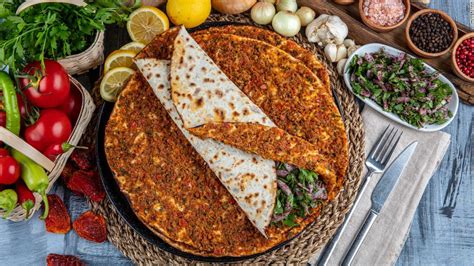Welcome to the luxurious world of Turkish leather, a realm where centuries-old traditions meet contemporary craftsmanship. Renowned for its rich history, exceptional techniques, and outstanding quality, Turkish leather products stand as a testament to the country’s deep-rooted connection with artisanal excellence. In this blog post, we will delve into the historical journey of Turkish leather, exploring the time-honored methods that have shaped its legacy. We’ll pay homage to the skilled artisans whose hands weave magic into every product and take you through the meticulous process behind the creation of these coveted goods. Get ready to unravel the story of Turkish leather and discover why its quality and durability have made it a staple in luxury markets around the globe. Join us as we celebrate the grandeur and elegance of Turkish leather products—a true fusion of tradition and sophistication.
Titles
History of Turkish Leather Products
The history of Turkish leather products is a tale woven through time, harking back to the pre-Ottoman era. As an integral part of Anatolian crafts, leather has long been lauded for its resilience and versatility. The intricate connection between Turkish culture and leather workmanship stretches back centuries, establishing a foundation that has carried through generations, evolving yet retaining its unique essence. In the grand bazaars and artisan workshops, the ancient techniques silently speak of the storied past, a testament to the durability and artistry of Turkish leather.
Delving deeper into the historical narrative, one discovers that throughout the ages, leather played a pivotal role not just in daily life but also in trade. The Seljuk and Ottoman empires particularly flourished in refining the craftsmanship of leather goods, exporting their superior quality products far and wide, effectively laying the groundwork for what would become a hallmark of Turkish craftsmanship. The tanning methods and embellishment techniques utilized then are still revered today, a reflection of an unwavering commitment to quality and detail synonymous with Turkish leather production.
The arrival of the 19th century brought with it industrial advancements, and with these innovations, the Turkish leather industry experienced a renaissance of sorts. This era saw the proliferation of leather factories and the modernization of tanning techniques, further solidifying the reputation of Turkish leather as a product of durability and finesse. As shifts in fashion and technology occurred, Turkish leather goods continued to adapt without compromising the deep-rooted traditions that set apart the authenticity of the craft from its global counterparts.
Today, the legacy of Turkish leather continues to endure, transcending borders and time. With a rich history that is passionately preserved by skilled artisans, Turkish leather remains a prominent figure in the world of fashion and craftsmanship. The narrative of Turkish leather is ever-expanding, an infinite story where each product is not just a commodity but a piece of history draped in the masterful art of Turkish culture and dedication to excellence.
Traditional Leather Techniques in Turkey
Turkey has long been renowned for its exquisite and traditional leather craftsmanship, a legacy that has been carefully preserved through generations. The intricate process of turning raw hides into beautiful and durable leather items is steeped in history, with techniques that are both time-honored and indicative of the rich cultural tapestry of the region. The age-old traditional leather techniques passed down through generations of artisans are not just about preserving a craft; they symbolize a deep connection to the Turkish way of life.
The initial phase of leather processing in Turkey, known as ‘tabaklama’, involves an elaborate tanning method. This technique, which has evolved little over the centuries, uses natural tannins derived from tree barks and plants, imbuing the leather with a unique texture and color that synthetics simply cannot replicate. The presence of these natural elements in the tanning solution not only enhances the leather’s aesthetic appeal but also contributes immensely to its longevity.
Leather dyeing is another pivotal step in the Turkish leather crafting process, where artisans employ a rich palette of natural dyes to achieve an impressive spectrum of colors. The labor of love that goes into dyeing each piece of leather is a testament to the patience and skill of Turkish craftsmen. The vibrancy and depth of color observed in Turkish leather goods are a direct result of the meticulous hand-dyeing processes that have been perfected over centuries.
In addition to its visually striking qualities, Turkish leather is celebrated for the sophisticated techniques used in the final stages of production, which often include detailed tooling, embossing, and stitching. Skilled artisans add intricate designs and patterns to the leather goods, showcasing a level of artistry and precision that is truly awe-inspiring. Through these elaborate techniques, each item tells a story, a narrative that extends from the tanner’s hand to the final owner, epitomizing the enduring charm and impeccable quality of Turkish leather.
Artisanal Leather Products from Turkey
Delving into the realm of artisanal leather products from Turkey, one uncovers a tapestry of cultural heritage and painstaking craftsmanship that transcends generations. Each handcrafted leather piece, be it a sumptuously soft handbag, a robust belt, or intricately designed footwear, bears the hallmark of traditional techniques melded with contemporary finesse, showcasing the profound dedication and skill of Turkish artisans. Expert hands in small ateliers across Anatolia deftly manipulate the leather, treating and molding it with an alchemy of practiced motions to create products that are not only supremely durable but also imbued with a timeless aesthetic appeal that is highly sought after globally.
When discussing the allure and unique characteristics of Turkish artisanal leather goods, one must acknowledge the bespoke nature of these items. Customarily, each piece is not a mere off-the-rack commodity but rather a story unfolding through leather—told with personalized details and finishes that resonate with the individuality of the bearer. This intricate dance of tradition and personal expression characterizes the Turkish artisanal leather market, where the relationship between the maker and the material is as intimate and enduring as that between the final product and its eventual owner. As a result, purchasing a Turkish leather artisanal product is tantamount to owning a fragment of cultural artistry.
In the narrative of artisanal leather craftsmanship, the vibrant Turkish bazaars and old souks stand as living galleries, exhibiting the plethora of leather goods that invite admiration and awe. From the buttery-soft feel of a well-crafted jacket to the sturdy resilience of hand-tooled boots, each article tells a tale of the meticulous effort invested in its creation—from the careful selection of high-quality hide to the final embossing or stitching that serves as the artisan’s signature. The passion for leatherwork that pulsates through the streets of Turkey reflects a heritage that is not only strikingly beautiful but also resilient, capable of withstanding the vicissitudes of both time and trends.
Moreover, the preservation of these age-old leather crafting traditions amidst the crush of modernization is a testament to their enduring allure and importance. In the hands of a Turkish leather artisan, the craft is not just about producing an item for utilitarian use, but rather it is an act of cultural perpetuation, an homage to an ancestry that prides itself on quality, durability, and artistry. For those who seek to acquire an authentic slice of Turkish heritage, the enchantment lies in the knowledge that with every crease, seam, and patina, they cradle a piece of history, a legacy unfolding in the palms of their hands.
Making of Turkish Leather Goods
The intricate process of making Turkish leather goods begins with the selection of high-quality hides, typically sourced from local cattle. These hides undergo a meticulous tanning process, which has been perfected over centuries, to transform them into supple and durable leather. This phase is crucial for the creation of leather that is not only resilient but also attains a distinctive patina over time, a hallmark of Turkish craftsmanship.
After the tanning, the leather is handed over to skilled artisans who specialize in various leatherworking techniques. These craftsmen use a blend of traditional methods and modern precision to cut, shape, and stitch the leather. Their adept hands are capable of producing a wide array of Turkish leather goods, from luxurious bags and jackets to unique accessories and traditional footwear, each piece reflecting the rich cultural heritage of Turkey.
The detailing process represents a significant stage in the production of Turkish leather goods, where embellishments, such as embroidery, hand-painting, or metalwork, are carefully applied. These details not only enhance the aesthetic appeal but also showcase the individual artisan’s touch, making each product a one-of-a-kind piece. Through such detailed work, the true essence of artisanal Turkish leather is captured, embodying a sense of uniqueness unrivaled by mass-produced items.
Finally, once the construction and detailing are completed, the leather goods undergo rigorous quality checks to ensure their durability and craftsmanship meet the high standards set by Turkish leather connoisseurs. This commitment to quality ensures that these leather goods are not only beautiful but also durable enough to withstand the test of time, often becoming cherished items that can be passed down through generations, much like the leather-making traditions of Turkey itself.
Quality and Durability of Turkish Leather
When it comes to the quality and durability of Turkish leather, connoisseurs and fashion aficionados alike acknowledge the superior characteristics that it brings to the table. The leather crafted in Turkey is not just a material but a reflection of a centuries-old legacy that upholds the highest standards of craftsmanship. Each piece of Turkish leather boasts a robustness, making it suitable for a wide range of luxury products from opulent leather jackets to exquisite handbags, ensuring that they withstand the test of time and fashion.
Moreover, the craftsmanship involved in producing Turkish leather goods is steeped in tradition, yet incorporates modern techniques to enhance the intrinsic resilience of the finished products. The tanning process, a critical step in leather production, utilizes both time-honored methods and contemporary ecological practices to produce leather that resists wear, tear, and the elements. This dual approach ensures that each item retains its allure and functionality over many years, giving customers unparalleled value and satisfaction.
The inherent strength of Turkish leather arises from the meticulous selection of raw materials, where only the finest hides are sourced, treated, and transformed into leather goods. It is this uncompromising approach to quality control that imbues Turkish leather with its signature toughness, making it an ideal choice for high-end goods that demand both elegance and endurance. Turkish artisans understand that the longevity of leather goods is not only a testament to their skill but also to the enduring legacy of Turkish leatherwork.
It is evident that the allure of Turkish leather does not solely lie in its aesthetic appeal, but also in its capacity to endure. Its longevity is a hallmark that resonates with buyers who seek not just a product, but a piece of enduring craftsmanship. As Turkish leather continues to be a preferred material among discerning customers globally, its reputation for quality and durability is not just maintained but indeed, is continuously enhanced with each meticulously crafted piece.






